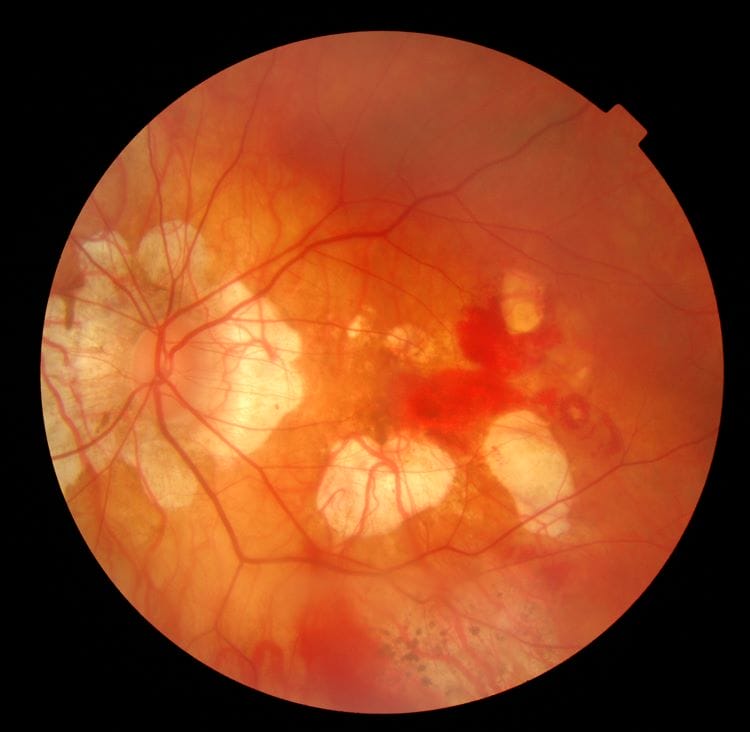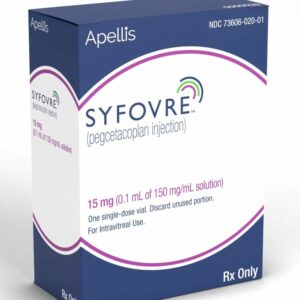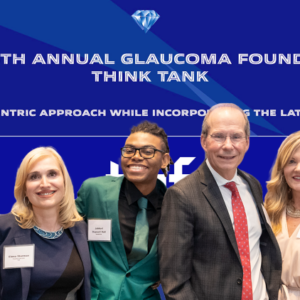December 8, 2023
Research funded by the National Eye Institute suggests that low density of pigment in the macula is associated with thinning of the retina and may serve as an early warning sign of glaucoma. The findings are based on nearly 400 women who were followed for 15 years. The study was published October 6 in the British Medical Journal Open Ophthalmology.
A leading cause of blindness, primary open-angle glaucoma often progresses undetected. Current glaucoma screening relies on measuring pressure inside the eye. High intraocular pressure indicates elevated glaucoma risk and is the only modifiable risk factor for the disease. However, glaucoma frequently develops even in people with normal intraocular pressure, underscoring the need for better detection strategies so the disease can be diagnosed and treated earlier.
The current study assessed the relationship between macular pigment optical density and retinal thickness, which were measured at baseline among 379 women. Fifteen years later, 32 of these women (50 eyes) had developed glaucoma. Compared with those women who did not have glaucoma, those who did were older and more likely to have had low macular pigment density at baseline. They also had thinner retinal layers in the macula that correspond to those areas affected in glaucoma.
“Our results provide important clues concerning the underlying biological relationship between macular pigment density and glaucoma,” said the study’s lead investigator, Yao Liu, MD, MS, assistant professor of ophthalmology at the University of Wisconsin-Madison.
The findings also suggest that supplementing diets with sources of lutein and zeaxanthin may prevent glaucoma or its progression. These yellow carotenoid pigments are found in egg yolks, corn, red seedless grapes, carrots, squash, and pumpkins. Dark leafy green vegetables and broccoli are particularly good sources of these yellow carotenoids. (The yellow color is hidden by the green chlorophyl in these foods.) Previous research shows that macular pigment density can be boosted by increasing dietary intake of foods rich in lutein and zeaxanthin.
Carotenoids protect the retina by absorbing light, which prevents it from scattering inside the eye and causing damage from light exposure. Carotenoids are also antioxidants, which protect against oxidative stress, cell death, organelle dysfunction, and inflammation. Low macular pigment density has previously been linked to retinal diseases such as age-related macular degeneration.
“The findings also support the need for ongoing clinical trials to determine whether increasing macular pigment density through carotenoid intake or low-cost supplementation may be effective in preventing glaucoma development or progression,” she said.
The analysis was based on data from the Carotenoid in Age-Related Eye Disease Study 2, an ancillary investigation of the Women’s Health Initiative, a landmark clinical trial and observational study that tracked health outcomes among thousands of women for decades.
The study was supported in part by NEI grants EY013018, EY016886 and EY025292.
Reference
Lawler T, Mares JA, Liu Z, Thuruthumaly C, Etheridge T, Vajaranant TS, Domalpally A, Hammond BR, Wallace RB, Tinker LF, Nalbandyan M, Klein BEK, Liu Y, Carotenoids in Age-Related Eye Disease Study Investigators. “Association of macular pigment optical density with retinal layer thicknesses in eyes with and without manifest primary open-angle glaucoma.” Published October 6, 2023 in BMJ Open Ophthalmology.





